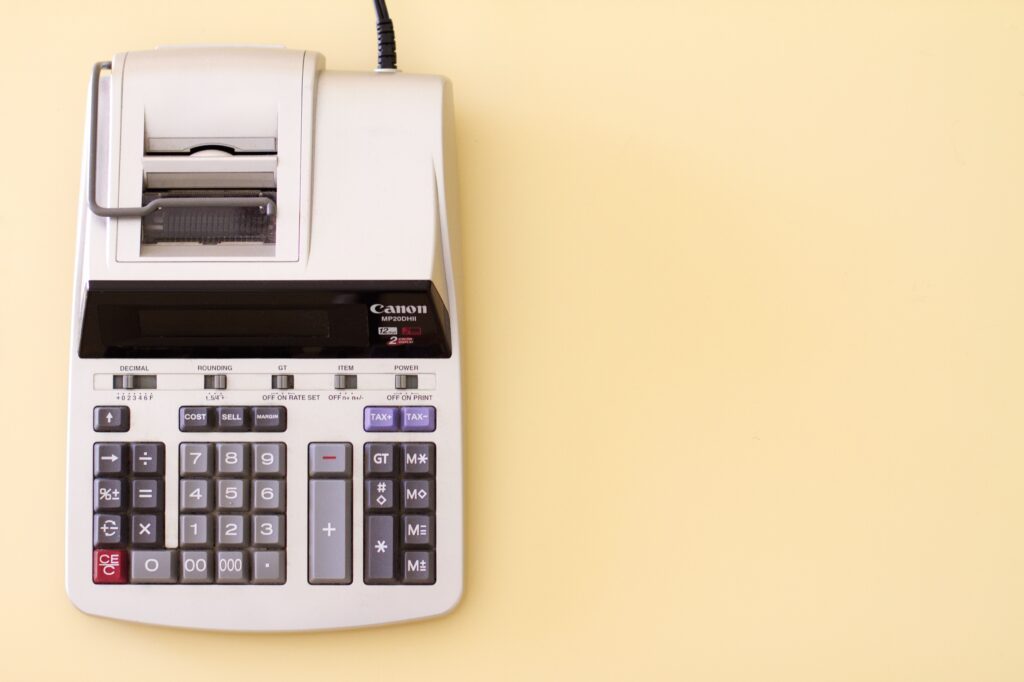
When you invest in a piece of real estate, you may be able to take advantage of depreciation. Real estate depreciation involves deducting the market value loss of a property because of the general wear and tear that affects it over time. If you use this strategy, you can recover the costs associated with maintenance and property improvements. You’ll also be able to reduce your tax liability.
The Internal Revenue Service allows property owners to deduct a certain amount from their income on each annual tax return. Whether you own a single property or have added numerous homes to your investment portfolio, understanding depreciation and how it works ensures you can take advantage of all tax breaks available to you. Below is a comprehensive guide that answers the question “How does depreciation work?”
What is Depreciation?
When you purchase a property and rent it out, you’ll be tasked with spending money to manage, improve, and maintain it. The IRS considers owning and renting a property to be a business-related task that you can produce income from. Since this income must be included in your tax return, there are specific benefits you can gain access to, such as depreciation.
Even though real estate often appreciates, the IRS assumes that investment properties will depreciate over time. Since the IRS believes that your property will lose value as you maintain it and rent it out, you can deduct the loss of value and maintenance costs over many years.
While the home or commercial building you purchase can be used to calculate depreciation, the value of your land doesn’t apply. Depreciation only occurs with assets that become worn over time. Land appreciates with each passing year.
Types of Depreciation
There are three types of depreciation that you should account for, which include physical depreciation, functional obsolescence, and economic obsolescence. Physical depreciation is the basic wear and tear that a property goes through because of weather, age, and several additional factors.
If the paint in one of the rooms starts to chip as it ages, it’s physically depreciating. This type of depreciation impacts real estate more than the other forms. If a property requires updates or cosmetic repairs, prospective buyers could make lower offers.
Functional obsolescence involves outdated features or design elements that lower the property’s value. If part of the property can no longer function as initially intended, it could be obsolete.
Let’s say that an older home consists of four bedrooms but just one bathroom. It could be considered functionally obsolete. The same is true of a home with a small kitchen if more recent properties in the area have larger ones. Most buyers view obsolete properties as less valuable than ones that have been updated recently.
As for economic depreciation, it involves external factors that might affect the property value, such as a decline in the quality of the neighborhood. If local market changes make a property less valuable, it would be considered an example of economic obsolescence. This type of obsolescence is challenging to predict and doesn’t always play a role in property depreciation.

Depreciation Methods
The two primary depreciation methods include straight-line and accelerated depreciation. Straight-line depreciation allows you to deduct an equal amount over the useful life of your property. The accelerated method consists of higher depreciation expenses in the earlier years.
While accelerated depreciation has its advantages, the straight-line method is easier to implement, which is why many investors and property owners use it. Let’s say that your home is worth $250,000. You could divide this amount by the standard tax life of 27.5 years, which would result in an annual depreciation of $9,091 per year.
You can also use accelerated depreciation with your property, which will allow you to depreciate items in your home that have shorter lifetimes than the structure itself. For example, the flooring will invariably depreciate faster than the building, which means that you can depreciate it at a quicker rate and earn a higher annual deduction early on. However, you must first obtain a cost segregation study, which evaluates every component in the property to identify ones that have a shorter useful lifetime. Examples of components with a shorter lifetime include stoves and light fixtures.
There are two primary accelerated depreciation methods, which include double declining balance and sum-of-the-years’ digits. The double declining balance method is the most common. it involves doubling the straight-line depreciation expense for the first year. In subsequent years, the same percentage is used for the non-depreciated amount.
As for the sum-of-the-years’ digits method, it takes the expected life of an asset and adds the digits for each year. If your assets will last for five years, you’ll add together 5+4+3+2+1, which equals 15. You must then divide each digit by the sum to identify the percentage by which the assets can be depreciated each year.
During the first year, you would divide five by 15, which results in 0.33, or 33%. Next year, you would need to divide four by 15, which is 27%. During the fifth year, you’ll depreciate 7% of the value. When adding up the percentages from all five years, you’ll get 100%.
Useful Life of Real Estate
Before you can calculate depreciation, you must first identify the useful life of the property. Residential properties have a useful life of 27.5 years, which means that you can depreciate the value of a single-family home that you’re renting out on your next 28 tax returns. In comparison, commercial properties have a useful life of 39 years.
Calculating Depreciation
Now that you know how depreciation works, it’s time to calculate it to determine how much you can deduct from your taxes. First, you must calculate your cost basis, which is the total value of your home minus the value of the land that it sits on.
If you eventually make improvements to your home, the cost basis will be the difference between the price of the improvements and your home’s cost basis. However, the improvements you make to the home can only be applied to the tax year that they were made.
The next step in this calculation involves selecting your preferred depreciation method. If you use the straight-line method, the calculation will be considerably easier. You can calculate the annual depreciation amount by dividing the cost basis of your home by its useful life value.
For example, let’s say that you buy a property for $500,000. If the land is valued at $100,000, the cost basis would be $400,000. You’ll then divide $400,000 by 27.5, which leads to an annual depreciation value of $14,545. If you own a commercial property of the same value that you rent out to other businesses, you would divide $400,000 by 39 years for an annual depreciation amount of $10,256.

Tax Implications
Depreciation has significant tax implications for investors. If you claim this as a deduction to reduce your taxable income, you might eventually need to pay recapture taxes.
If the property’s cost basis is $400,000 and your depreciation is $45,000, your capital gains will be calculated at $355,000. If you eventually sell your property for $500,000, the capital gains tax will be assessed on a profit of $145,000 instead of $100,000.
You can minimize depreciation recapture taxes by speaking with an accountant or CPA. You could also reinvest the profits from one investment property into the purchase of another through a 1031 exchange. This strategy allows you to defer your capital gains taxes.
You could also minimize recapture taxes by taking advantage of a Section 121 exclusion, which allows you to exclude as much as $250,000 in profits from the sale of your home if you lived there for two out of the last five years.
Real Estate and Cost Segregation
Cost segregation is an important component of depreciation that allows you to separate the assets within your investment property into various classifications. Each classification can have a specific depreciation period. This strategy is useful because it allows you to accelerate depreciation. You don’t need to adhere to the standard method of 27.5 or 39 years.
For example, furniture, appliances, and carpeting are usually separated into the five-year property class, which means that you can depreciate their entire value in just five years.
By accelerating depreciation, you’ll be able to take a larger deduction in the early years following your investment. A larger deduction means that your taxable income will be significantly reduced. By paying less taxes, you can increase the property’s cash flow, which gives you more funds for maintaining the home, making improvements, or buying other properties.

Benefits of Depreciation for Real Estate Investors
If you invest in real estate, depreciation can be highly beneficial. Since depreciation can be marked on your return as an expense, you can deduct it from your income and lower your taxes. You’ll also benefit from an increase in cash flow, which can be advantageous in the early years of owning an investment property. This technique can also be a boon to your long-term investment strategy. You’ll receive annual tax benefits for anywhere from 27.5 to 39 years, which is ideal if you want to hold the property for years to come.
Common Mistakes and How to Avoid Them
While depreciation is an effective tax strategy, there are a few common mistakes that you need to avoid. For example, make sure you don’t incorrectly calculate the value of your land. In this scenario, you may need to file an amended return to fix the error.
Some investors don’t take full advantage of cost segregation. This technique allows you to accelerate depreciation and reduce your taxable income by a larger amount early on. Keep in mind, however, that cost segregation studies are priced at anywhere from $5,000-$15,000. Weigh the costs against the benefits before scheduling one.
It’s also crucial that you keep proper records if you want to deduct depreciation every year. If the IRS ever audits your return, you must be able to prove the value of your home and the assets within.
Conclusion
Depreciation is a tax benefit that real estate investors can access once they add a property to their portfolio. If you intend to buy and hold properties for many years, you can use depreciation to reduce your taxable income on each return. However, calculating depreciation and deducting it from your tax return can be complicated.
Consult with a tax professional to avoid making a mistake. Whether you’re a new or experienced real estate investor, it’s highly recommended that you utilize depreciation as a strategic financial tool that can improve the value of your portfolio.